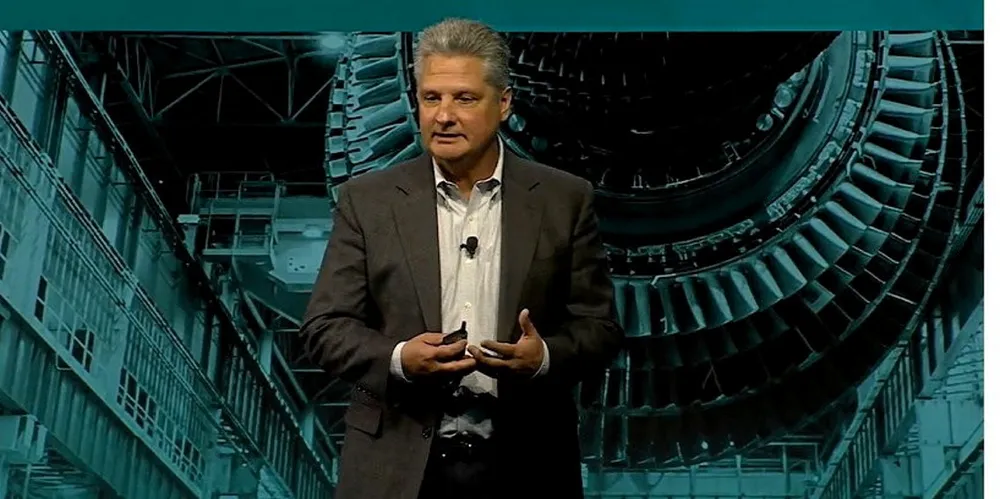'We'll be a lot smarter': how GE Vernova plans to fix loss-making offshore wind
Soon to be spun-off energy giant claims 'better days ahead' for wind at sea as it learns lessons and prices adjust to new realities

GE Vernova is losing a boatload of money with offshore wind but an aggressive restructuring drive underway could position it to begin generating profits as early as 2026, senior executives told investors on Wednesday.
“We have our arms around this business. We are working and improving it,” said Scott Strazik, who will continue as CEO after its planned 2 April spin-off as a standalone company by parent General Electric. “You will see that in the financials in 2024 and 2025.”
In 2023, offshore wind lost $1.1bn and this year won’t be much better as GE Vernova grapples with the “tough economics” of a $4bn backlog of orders for the Haliade-X turbine in Europe and the US for delivery over the next two years.
In today’s difficult economic environment, GE Vernova is executing on contracts priced and signed before the Covid-19 pandemic, an era of cheap borrowing costs and low inflation, fully functioning global supply chains, and geopolitical calm.
Those low prices also resulted from turbine OEMs bidding assertively against each other to secure orders, looking to get their foot in the door in emerging markets such as New England in the US.
Since then, the sector is shaking out, especially in the US, where developers such as Orsted have been unable to make economics work for some early mover projects at contracted off-take prices.
While GE Vernova’s turbine orders are money losers, a valuable upside is that by the end of 2026, the vendor will have a fleet of Haliade-X turbines with at least 4.5 million operating hours. No other OEM with a 12MW nameplate or greater capacity unit and a 200-metre-plus rotor will have that level of knowledge.
“After we install the machines, we see us gaining tremendous experience,” said wind CEO Vic Abate, adding, “Haliade-X has a 250-metre rotor to drive industry leading efficiency and output. No other turbine out there has a rotor that size.”
The Haliade-X is one of several “workhorse” products from a suite of wind turbines that GE Vernova streamlined over the past 18 months to cut fleet design, manufacturing, and lifecycle servicing costs.
As these machines will be deployed by the thousands globally, they must set the quality standard in design, manufacturing, and lifecycle of services, according to Abate, hence the OEM’s push to drive continuous improvement day-in, day-out, in all plant and field operations.
Costs out
Strazik and Abate detailed how GE Vernova is taking out costs at its manufacturing facility in St. Nazaire, France, claiming the cycle time to produce a Haliade-X nacelle has been cut 40% over the last year.
“We’ve been able to do this by reducing rework. To reduce structural costs, we’re refocusing the team with fewer layers,” said Abate, while improving quality. The OEM is also pulling various contractors from its operation there to further eliminate waste.
Added Strazik: “You see every quarter a drastic improvement on us coming down the learning curve on how we are building these. With our existing backlog over the next few years, the economics are going to get better off of that life cycle, or that learning curve on cost.”
Looking ahead, they are upbeat about offshore wind growth globally in Europe and the US, despite ongoing challenges in both, and GE Vernova’s ability to profitably serve them.
Regions such as the US northeast want to deploy offshore wind and envision decades of related industrial growth. They are looking for local supply and investment, as well as carbon-free energy at scale to come from projects, according to Abate.
“The market is going through a tremendous re-set. Honestly, from where I sit, I believe better days are ahead,” he said, noting that projects that withdrew from US off-take contracts and re-bid, are obtaining 30% to 50% higher PPA prices from levels when the OEM built its backlog.
“What is changing now is for governments to get offshore at scale with quality, they realise that the PPAs had to go up. You are seeing that happen,” he added. “I do believe the developers and projects are leveraging that point, and they are putting together plans that are more robust.”
The OEM is learning from its earlier painful contract missteps offshore. “We will be a lot smarter,” promises Abate, adding: “We are not taking any business unless it makes economic sense.”
“We are applying significant price and selectivity on our projects in future bids, which will position us to build a much better, profitable book of business going forward,” he added, with turbine prices about 50% higher than those in its backlog. “If deals go forward, that is the only way we are going forward.”
Strazik was blunt about any perceived pressure to populate the Haliade-X order book in 2026 after present orders are filled, saying the days of chasing bad deals for whatever reason are over.
“There could be a period of time with limited offshore wind revenue. We’re just not going to run the company with that concept of having a tank to fill with any one year,” he said, adding the OEM will wait for business “we like”.
(Copyright)